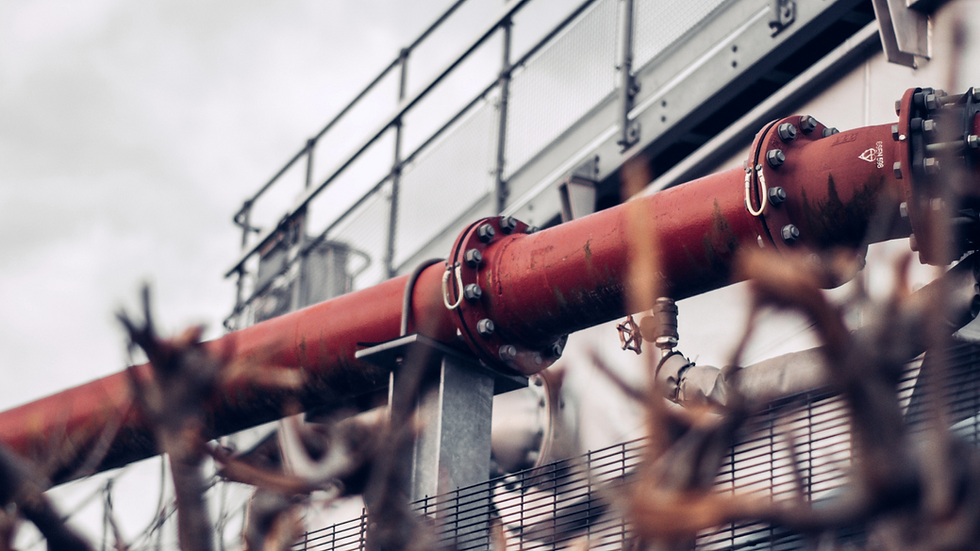An Inside Look #4: Understanding Sewage Pumping Stations, Function, Types, and Maintenance
- matthewgulley6
- Jun 20, 2023
- 3 min read
Updated: Jul 11, 2023

Sewage pumping stations play a vital role in managing wastewater effectively, ensuring the safe disposal and prevention of environmental contamination. These stations, also known as sewage pump stations or pump stations, are integral components of modern urban infrastructure. In this blog post, we will explore what a sewage pumping station is, how it works, whether you need one, the types of pumping stations available, and why pump station maintenance is crucial.
What is a Sewage Pumping Station?
A sewage pumping station is a facility designed to collect and transport wastewater, including domestic sewage and industrial effluents, from lower to higher elevations. It acts as a crucial intermediary between the sewage collection network and the wastewater treatment plant. The primary purpose of a pump station is to overcome gravitational limitations by using pumps to lift the wastewater to an appropriate level for further treatment or disposal.
How do Sewage Pumping Stations Work?
Sewage pumping stations work through a systematic process. Here's a simplified overview of their operation
Collection: Wastewater from homes, buildings, and industries is collected through a network of underground sewer pipes.
Inflow: The wastewater flows into the pump station either by gravity or via force mains, which are pressurized pipes that direct sewage from lower areas.
Pumps: Within the pump station, powerful pumps are employed to lift the wastewater to a higher elevation. These pumps are designed to handle the specific flow rates and pressures required for efficient operation.
Lift and Transport: The pumps raise the wastewater to a level where it can flow naturally or be redirected into the treatment system. The water is transported through force mains or other conveyance systems.
Discharge: The wastewater is eventually discharged into a treatment facility or a designated area for appropriate disposal, following local regulations and environmental standards.
Do I Need a Pumping Station?
The need for a sewage pumping station depends on several factors, including the topography of the area, local regulations, and the capacity of the existing sewer network. Here are a few scenarios where a pumping station may be necessary:
Hilly or Low-Lying Areas: In regions with varying elevations, pump stations are crucial to transport wastewater from lower to higher areas, overcoming gravitational limitations.
Long-Distance Transport: If the distance between the sewage source and the treatment facility is substantial, pump stations may be needed to maintain proper flow rates and prevent backups.
Industrial or Commercial Zones: Areas with high concentrations of industrial or commercial establishments may require pump stations to handle larger volumes of wastewater efficiently.
What Type of Sewage Pumping Station Do I Need?
The type of sewage pumping station you need will depend on various factors, including the expected flow rates, the elevation difference, and the nature of the wastewater being transported. There are generally two types of pump stations:
Submersible Pump Stations: These stations feature submersible pumps installed directly inside the wet well, submerged in the wastewater. They are compact, easy to install, and require less space. Submersible pump stations are ideal for low-to-medium flow applications.
Dry Well Pump Stations: Dry well pump stations have the pumps installed in a dry well adjacent to the wet well. These stations are suitable for high-flow applications and provide easier access for maintenance and repairs.
Why is Pump Station Maintenance Important?
Proper maintenance of sewage pumping stations is critical for ensuring efficient and reliable operation. Here's why pump station maintenance is essential:
Performance and Reliability: Regular maintenance helps identify and address potential issues before they escalate, ensuring optimal performance and preventing costly breakdowns or system failures.
Safety and Environmental Protection: Pump stations that are well-maintained reduce the risk of leaks, spills, and overflows, thereby safeguarding the environment and public health.
Cost-Efficiency: Timely maintenance minimizes energy consumption, prolongs the lifespan of pumps and equipment, and reduces the need for emergency repairs, resulting in long-term cost savings.
Compliance with Regulations: Adequate maintenance ensures compliance with local regulations and standards governing wastewater management and disposal.
Conclusion
Sewage pumping stations are indispensable components of wastewater management systems. They play a crucial role in transporting wastewater from lower to higher elevations, enabling efficient treatment and disposal. By understanding how these stations work, determining the need for one, selecting the appropriate type, and prioritizing regular maintenance, you can ensure the smooth functioning of your sewage pumping station, protect the environment, and contribute to the overall well-being of your community.
.png)
Comments